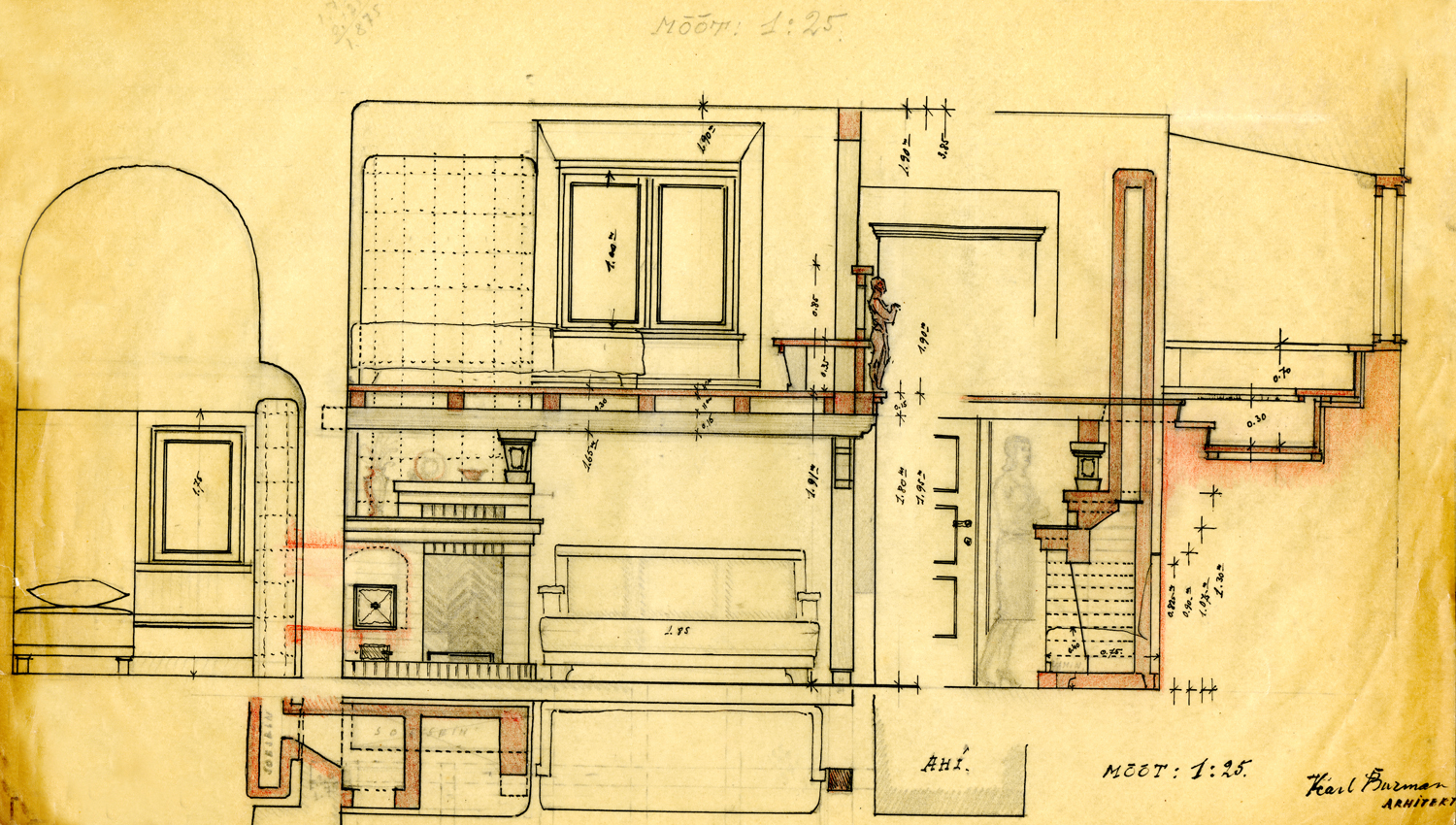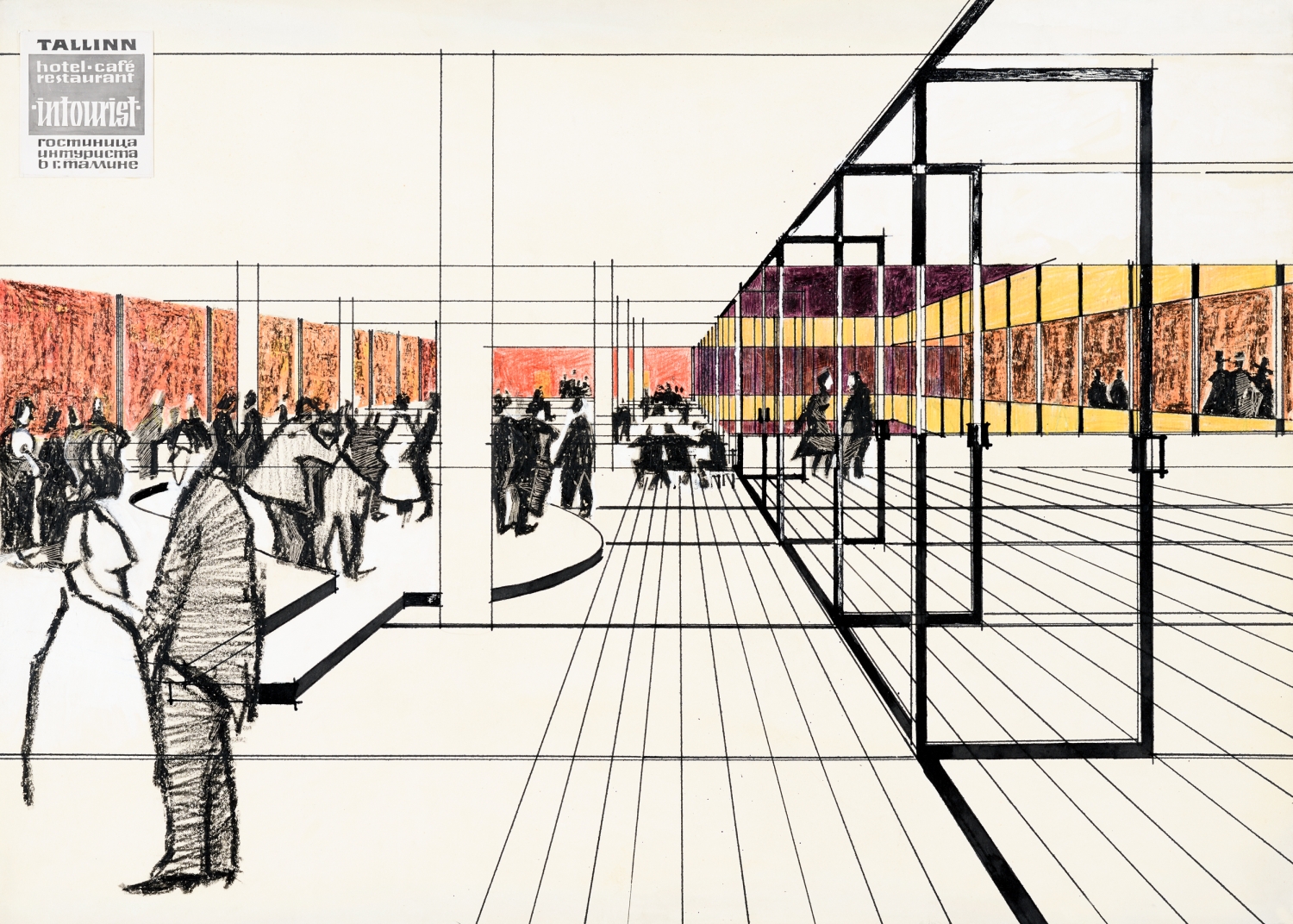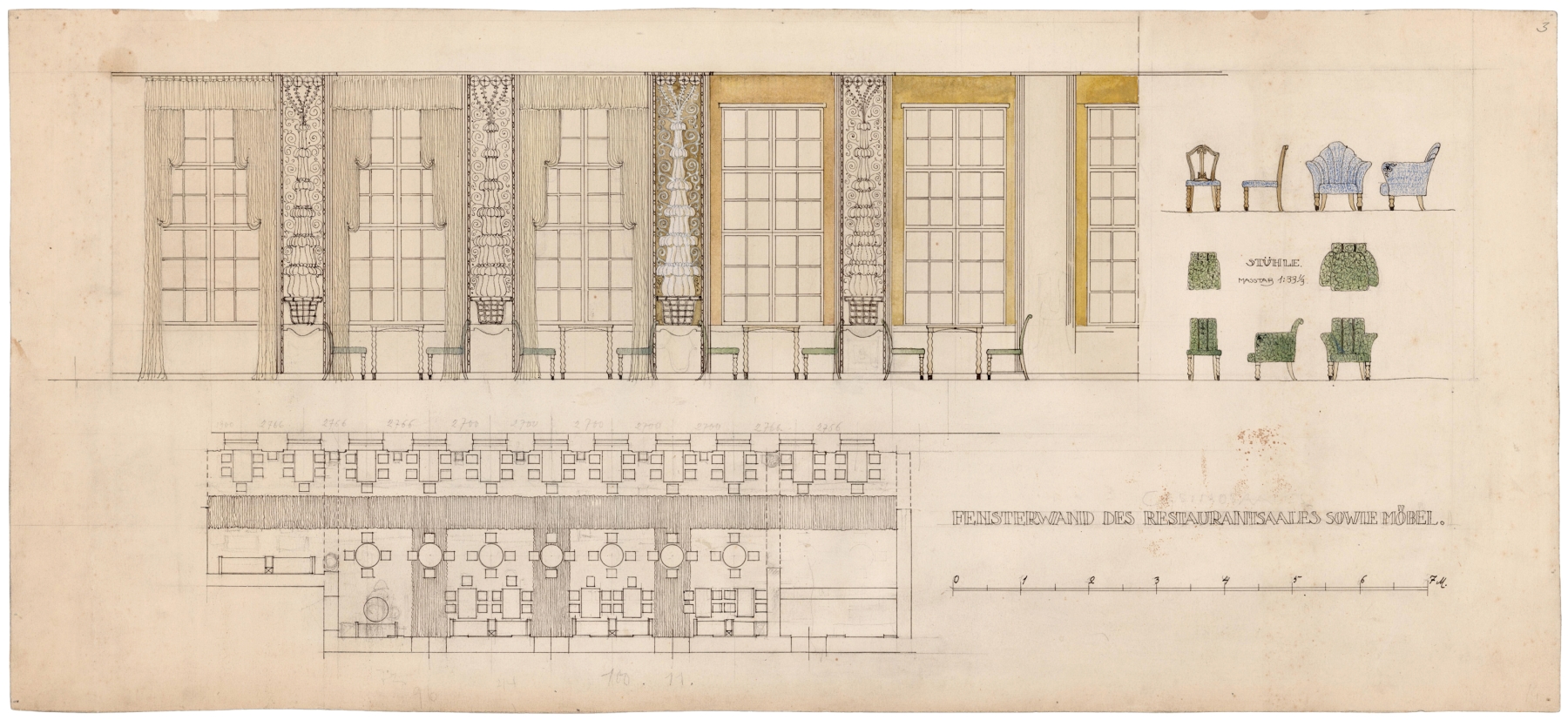Tag Archives: interior
Interior design of the Composers’ house in Tallinn

Vello Asi, ca 1960–1964. EAM 4.14.4
The drawing by interior designer Vello Asi depicts a view of the vestibule of the Composers’ House (architects Udo Ivask and Paul Härmson, completed 1964) located on Lauter Street in Tallinn – straight from the street through a big window. The aerial-looking interior with eye-catching low-sitting furniture is designed in the spirit of the 1960s. As was characteristic of the era, the interior designers picked up pointers from Nordic architecture literature that had just become accessible. This new approach to interior design valued open space, horizontal lines and light furniture that could be moved around with ease; it also favoured an inclusive environment to facilitate spending time in passable rooms. The drawing made with ink and watercolours was acquired by the museum in 2017. Text: Sandra Mälk
Veel: 1960s, interior, interior architect: Vello Asi, Tallinn
Interior design of the Tallinn Town Hall

Leila Pärtelpoeg, 1973–1978. EAM 4.3.7
During the renovation of the oldest Gothic town hall which has been preserved in Northern Europe (completed in the beginning of the 15th century), a competition was held to find a fitting interior design for the historic surroundings. Some of the decision-makers believed the winning solution by interior architect Leila Pärtelpoeg with its heavy black furniture, high gloss doors and copper lamp globes to be much too competitive with the historical legacy. Others, however, saw the tension between new and old as an expected means to invigorate the room. The drawings depict medieval festivities in the trading hall and the guild-hall with historical chandeliers and side reliefs. Leila Pärtelpoeg donated nearly 50 drawings of the furniture and interior design to the museum in 2000. Text: Sandra Mälk
Veel: 1970s, interior, interior architect: Leila Pärtelpoeg, Tallinn
Reconstruction of the Neitsitorn tower into a studio apartment

Karl Burman, 1945–1947. MEA 3.2.34
Artist-architect Karl Burman lost his home in Kadriorg during the war and received new rooms in Neitsitorn (the Virgin’s Tower) in Old Town Tallinn, which had been an established gathering place for artists for a long time. The top floors of the tower housed a studio and living quarters. For 20 years the famous architect lived in a small one-room apartment within the thick walls of the medieval wall tower and planned to carry out reconstructions during his time there. In the sketches, Karl Burman has depicted the tower as a southern villa with spacious balconies and skylights, he also covered the façades with lush climbing plants. Every corner has been put into use – benches and built-in cupboards designed for the niches. The tower was restored and reconstructed as a cafeteria in 1968–1980. The drawings came to the museum via architect Teddy Böckler in 1994. Text: Sandra Mälk
Veel: 1940s, architect: Karl Burman, interior, reconstruction
Interior design for Hotel Viru

Vello Asi, Väino Tamm, Loomet Raudsepp, 1964–1968. MEA 4.2.2
Hotel Viru (architects Henno Sepmann, Mart Port) was the highest and most modern hotel building in Soviet Estonia. It was primarily targeted at guests from Finland because the Tallinn-Helsinki seaway was reopened in 1965. However, locals were also able to access the bars and cafés of the hotel. The drawings illustrate a restaurant and a bar on the lowest volume of the building. The simplistic style reflected in the interior and the free plan indicate influences by modern Nordic room design – the opposite approach to the extravagant decade that preceded it. Drafts for the interior of Hotel Viru were to the museum by Eesti Projekt in 1994. Text: Sandra Mälk
Veel: 1960s, architect: Väino Tamm, architect: Vello Asi, interior, modernism
Interiors of the Estonia Theatre and Concert Hall

Armas Lindgren, Wivi Lönn, 1912. MEA 4.1.1
These watercolour drawings of an art-nouveau and classicist restaurant, library, and foyer were part of an entry package for the Estonia Theatre and Opera House’s architectural competition. The theatre building became a chief national symbol, a cultural citadel and one of the largest structures in Tallinn at the time. The foyers are adorned with mascarons; majestic chandeliers; and fashionable, fluted new-classicist pilasters, which were a novel phenomenon. Still, the final design of the national theatre’s foyer was slightly altered. The original theatre was destroyed in the March 1944 bombing of Tallinn, then restored according to a design by Alar Kotli (completed 1953), which replaced the original art-nouveau interiors with classicist Stalinist design. Drawings were acquired from the institution of “Eesti Ehitusmälestised” in 1993. Text: Sandra Mälk
Veel: 1910s, architect: Armas Lindgren, architect: Wivi Lönn, interior, Tallinn, watercolour







